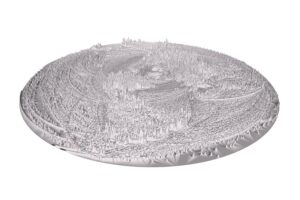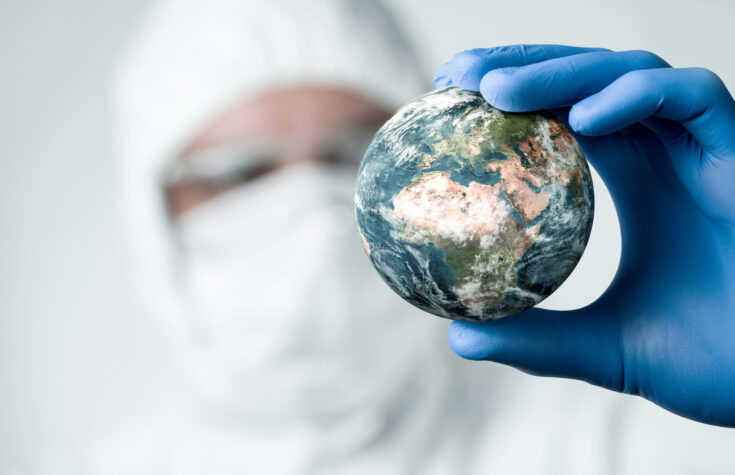A project funded by AHRC is exploring dramatic new ways to communicate the realities of climate data and climate change.
Climate change is a vast topic. It can be hard for people to grasp the issues at hand, with thousands of data points and many interconnected factors. Charts and graphs are often too complex to engage people, or cannot tell the full picture.
Our connection with climate data is further complicated by:
- sociology
- history
- language
- politics.
A three-year project funded by the Arts and Humanities Research Council (AHRC) takes a new approach. The project is called Materializing Data, Embodying Climate Change. It asks how might our engagement with climate change be different if we could walk around the data, touch it, or carry it with us?
With this inspiration, the programme team is developing novel images, animations and artefacts to communicate climate data in new ways. The team is led by Professor Tom Corby at Central St Martin’s College at the University of the Arts in London.
The world in your hand

Model of carbon emissions from human activity between the 1970s and now, in the northern hemisphere. Diameter 1.5m
For example, the Little Earths project creates 3D-printed miniature globes, digitally modelled from climate data.
These tactical and fragile objects are a striking metaphor for the power and fragility of nature’s environmental systems and our human relationships with it. They are offered to policymakers and the public to be carried around as personal possessions, reinforcing the everyday care needed to protect our planet.
Revealing unseen patterns
The Geographies of Emissions project combines a wide range of different data to generate beautiful geographical images giving new insights.
Greenhouse gas emissions data from the Emissions Database for Global Atmospheric Research (EDGAR) is combined with other data to create startling new visualisations, such as:
- livestock distribution
- road transport
- aviation routes.
The world on your table
A third project is creating large circular table-top models, generated by 3D printing, that provide another striking physical embodiment of global climate change and emissions data.
Creating large models from complex multi-layered datasets in this way has involved both creative and engineering challenges, pushing the boundaries of 3D printing technology.
Spreading the experience
The team’s work (Manifest Data Lab) has been presented at events including the Cambridge Festival, Creative Carbon Scotland and the UK Antarctic Science Conference, and will feature at COP26 in November 2021.
As the pandemic eases from 2021 on, the programme to create and present these new insights and objects physically will gather pace.
Tom Corby says:
We have to find better ways to talk about climate change and give the data life in people’s imaginations. Data can capture hidden dimensions and patterns in forms that other media such as moving image or photography on their own cannot.
Our project team is excited to have found new ways to do this through collaborations between artists and scientists, often pushing both creative and engineering boundaries.
Our aim is that over the coming years, through COP26 and beyond, these approaches to embodying data can engage audiences and spark new reactions wherever climate change is discussed.
Further information
The Materializing Data: Embodying Climate Change programme began in 2019 and runs until 2022.
The project team brings together experienced researchers from:
- Central St. Martins (University of the Arts)
- the British Antarctic Survey
- design studio Proboscis
- computer scientists from Birkbeck
- University of London.
Other partners include:
- co-funder, the Natural Environment Research Council
- the Victoria and Albert Museum
- the Royal Meteorological Society
- the Foundation for Art Creative Technology.
Last updated: 2 July 2021

